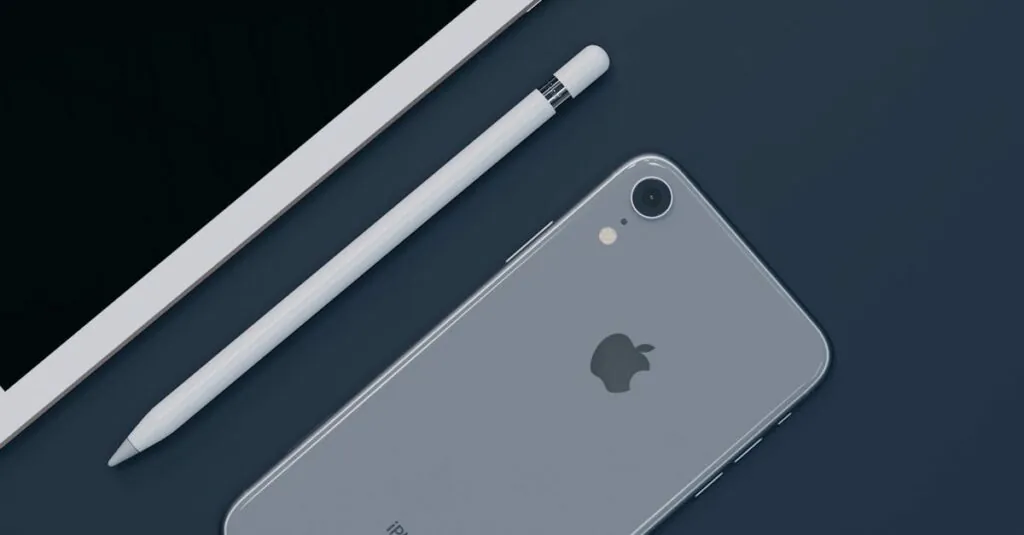Table of Contents
ToggleIn a world where technology evolves faster than a cat video goes viral, the iPhone X stands as a sleek symbol of innovation. But with all the buzz around eSIM technology, one question lingers: Is the iPhone X ready to join the eSIM party? Spoiler alert: it’s not.
While this beauty boasts a stunning display and impressive features, it doesn’t support eSIM capabilities. So if you’re dreaming of ditching that pesky physical SIM card, you might need to look at newer models. But don’t worry; the iPhone X still shines brightly in the smartphone galaxy. It’s perfect for those who appreciate classic tech with a touch of elegance.
Overview of eSIM Technology
eSIM technology represents a significant advancement in mobile connectivity. This digitized SIM card eliminates the need for physical cards, allowing for easier management of mobile plans. Users can switch carriers or plans remotely without acquiring a new SIM. Compatibility with various devices enhances flexibility for consumers and businesses alike.
Mobile operators are increasingly adopting eSIM technology. Providing support for these virtual SIMs offers customers convenience and a streamlined user experience. Moreover, eSIMs enable multiple profiles, allowing users to maintain various numbers on a single device. This feature benefits frequent travelers, who can access local networks without switching SIM cards.
Security is another important aspect of eSIM technology. The embedded SIM offers improved protection against physical theft, as there’s no card to remove and replace. Cloud-based activation further secures the connection, minimizing the risk of unauthorized usage.
Devices supporting eSIM technology contribute to a more sustainable future. The reduction in physical SIM manufacturing lowers environmental impact. More manufacturers are expected to integrate eSIM capabilities into their products as the technology matures.
As mobile technology evolves, eSIMs will likely play a pivotal role in connectivity. Users looking for the latest features should consider newer device models, as many older phones, like the iPhone X, lack eSIM support. Understanding eSIM benefits can guide users in choosing devices that align with future communication needs.
iPhone X Specifications
The iPhone X, launched in 2017, features a 5.8-inch Super Retina display and a powerful A11 Bionic chip. While it boasts impressive specifications, it lacks eSIM support, limiting its compatibility with the latest mobile technology.
eSIM Support in iPhone Models
Apple introduced eSIM technology with the iPhone XS, XS Max, and XR. Prior models, including the iPhone X, do not offer this feature. Users seeking the flexibility of eSIM functionality must consider devices released after the iPhone X.
Comparison with Other iPhones
In comparison to newer models, the iPhone X lacks dual SIM capabilities provided by eSIM technology. The iPhone 11 and subsequent models support both eSIM and dual SIM capabilities, enhancing user convenience. Offering the ability to switch between different carriers easily, these newer iPhones cater to users with multiple mobile plans.
Compatibility Factors
Compatibility with eSIM technology depends on several factors, including carrier support and regional variations. Users considering eSIM functionality must evaluate their options based on these criteria.
Carrier Support for eSIM
Carrier support plays a vital role in the adoption of eSIM technology. Not all carriers offer eSIM services, so checking with individual providers is essential. Many major U.S. carriers, such as Verizon, AT&T, and T-Mobile support eSIM activation for compatible devices. In contrast, smaller or regional carriers may lack this capability. Users need to verify that their intended carrier provides eSIM support before making any choices. If users select a device that lacks eSIM functionality, they cannot take advantage of this emerging technology. Ultimately, successful usage of eSIM depends on carrier compatibility.
Regional Variations
Regional variations impact eSIM availability significantly. Different countries impose unique regulations regarding mobile technology, affecting carrier offerings. In the European Union, for instance, eSIM adoption is more widespread, with many carriers enabling this feature. However, some countries may not support eSIM technology due to infrastructural limitations or regulatory hurdles. Users traveling internationally should research which carriers in their destination countries offer eSIM services. In regions with limited eSIM support, relying on traditional SIM cards remains necessary. Thus, understanding these variations ensures users make informed decisions about their device compatibility.
User Experience with eSIM on iPhone X
Users cannot set up eSIM on an iPhone X due to its lack of support for this technology. iPhone models like the XS, XS Max, and XR introduced eSIM capabilities. Those who have iPhone X will need a physical SIM card for connectivity.
Setting Up eSIM on iPhone X
Since the iPhone X does not accommodate eSIM, setting it up isn’t possible. Transitioning to a newer model like the iPhone XS significantly eases the setup process. Users can activate eSIM with just a QR code or app from their carrier, streamlining the experience.
Troubleshooting Common Issues
Common issues relevant to eSIM activation do not apply to iPhone X users. Instead, those with models supporting eSIM might face challenges like failure to activate or network problems. Ensuring the device’s iOS is updated often resolves these issues, along with verifying carrier support and profile management.
While the iPhone X remains a popular choice for its design and features it doesn’t support eSIM technology. Users looking for the flexibility and convenience offered by eSIM will need to explore newer models like the iPhone XS and beyond. These devices not only support eSIM but also enhance the overall mobile experience with dual SIM capabilities.
As mobile technology continues to advance eSIM is becoming increasingly important in connectivity. For those considering an upgrade it’s essential to evaluate both device compatibility and carrier support to fully leverage the benefits of eSIM technology.







